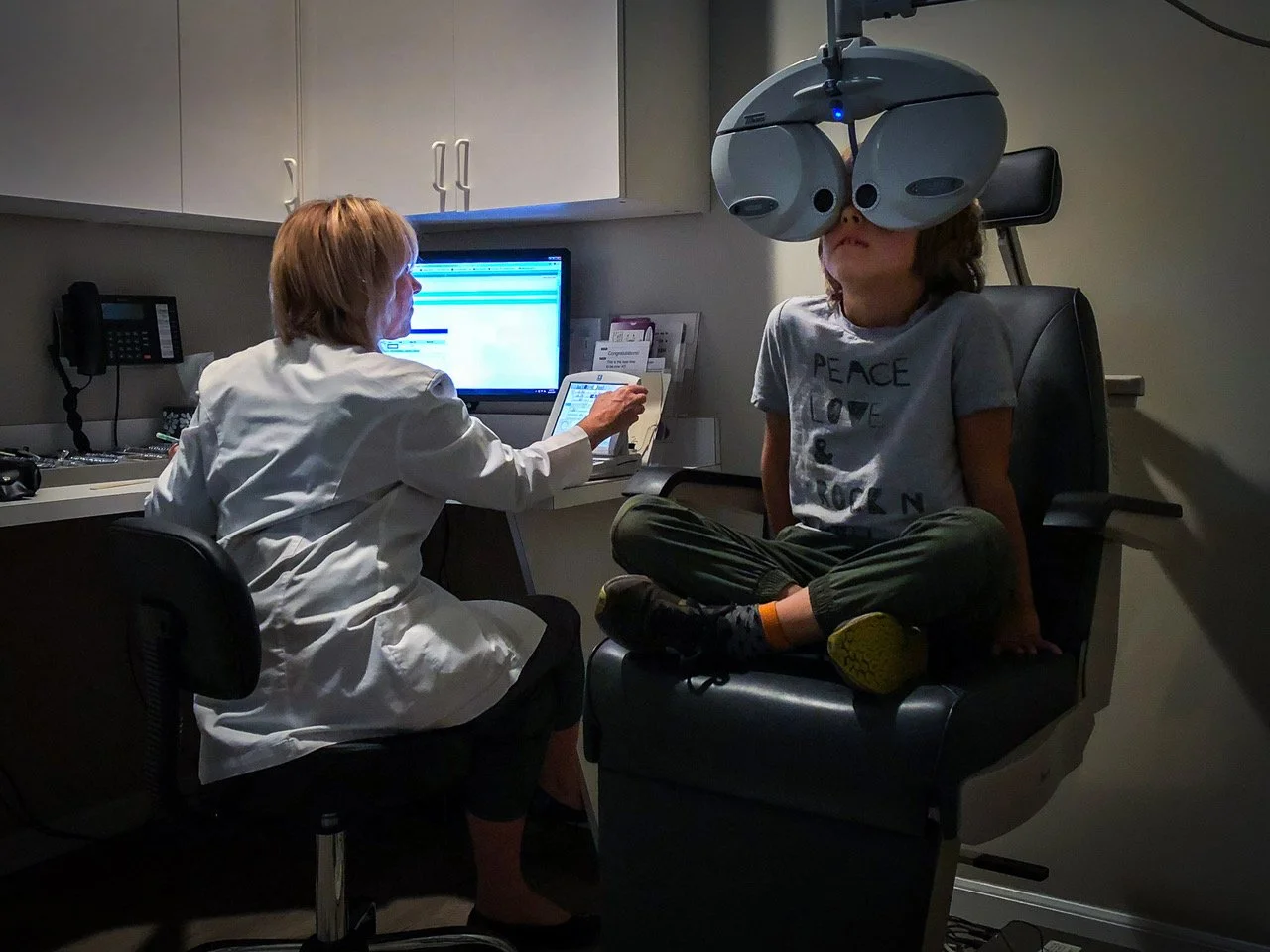Special Tree Adds Visagraph to Vision Therapy Program for Brain Injury Rehabilitation
After three separate eye surgeries to repair detached retinas, resulting in 75 days total spent face-down to recover fully, Special Tree CEO Joseph Richert knows first-hand how powerful vision can be in everyday functioning.
That’s one reason he is passionate about evaluating all patients with brain injury for vision challenges when they first come to Special Tree. Another is simply the good sense it makes to screen patients for impaired vision at the outset; something that is often overlooked and which can have a tremendous impact on rehabilitation and recovery.
“About 70 percent of your sensory nerve fibers are vision, just vision,” says Dr. Danna Haba, the Shelby Township-based optometrist who oversees Special Tree’s vision therapy program. “If your brain is telling you that you’re seeing wrong, it interferes unbelievably.”
Recognizing the need to address vision limitations after brain injury, Special Tree screens for vision problems with every patient.
“The incidence of vision problems is high in the brain injury population – and it’s the last thing that’s thought of in the therapy world,” Haba adds. “I call it the missing piece of rehab. Special Tree is unique in looking at vision right out of the gate.”
In the interest of adding to its already solid vision therapy program, Special Tree recently introduced the Visagraph, a device that records eye movements. Patients read or participate in activities while wearing special goggles that help therapists understand how well the eyes are seeing and how well the brain is processing that information, says Haba. “It’s a unique way of measuring and knowing, and it’s unique for a brain injury facility to have this.”
Vision relates to balance, speech, language and learning, says Patricia Laws, occupational therapist and vision program facilitator for Special Tree. Clients who are non-verbal might benefit from using eye tracking devices, and if vision is hindered, that can’t happen, she notes. Additionally, vision is a huge factor for pediatric clients working on language, memory and communication.
“Vision integrates into every single lobe of the brain,” Laws notes. “It’s such a dominant sense. It can impact language, learning, reading and writing.”
Indeed, the CDC reports that while a majority of Americans believe losing their eyesight would be hugely detrimental, 10 percent of adults have never had an eye exam. After brain injury, many patients experience blurred vision, double vision or decreased peripheral vision. They can also experience problems with balance, headaches or intense responses to light and sound.
Often, after brain injury, the eyes may not work together properly. What’s more, the brain may not receive or process information from the eyes like it should.
Haba often prescribes a combination of treatments and therapies, including corrective eyeglasses, prisms in eyeglasses, and other steps toward rebuilding vision. A recent University of Toronto study revealed that while there are “promising interventions for vision deficits following traumatic brain injury,” more research is needed. Additionally, the study advocated for rehabilitation professionals to play “an important role in screening for vision impairments,” recommending treatments and following through during the rehabilitation process.
For Richert’s own recovery, he says “the trick was getting my brain to lock both eyes together.” He participated in computer-generated rehabilitation through Haba’s vision clinic, and there are other exercises to correct such challenges.
With patients who have sustained a brain injury, “very rarely is the problem with the eye itself,” Haba says. “It’s really brain function and how vision is processed within the brain. Vision is really the preconscious information coming into your brain all the time to tell you about where you are in space. The visual system gets wrong information and perceives the world as distorted, tilted, rocking.”
“We don’t necessarily realize that vision may be impaired,” Richert says. “A patient can feel tilted when sitting in a chair. With prisms and other corrections, we can get people to sit properly, to balance. Some of that is pretty magical.”

